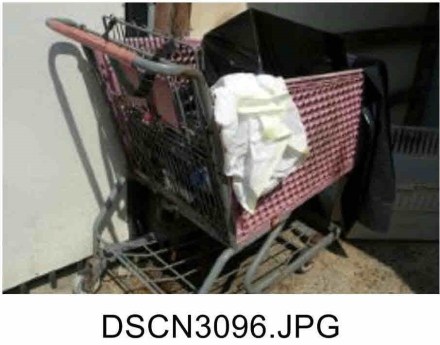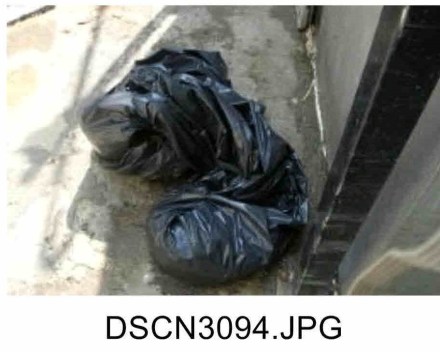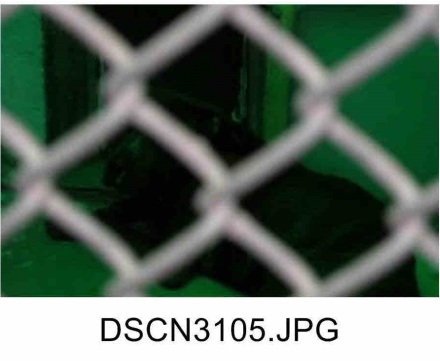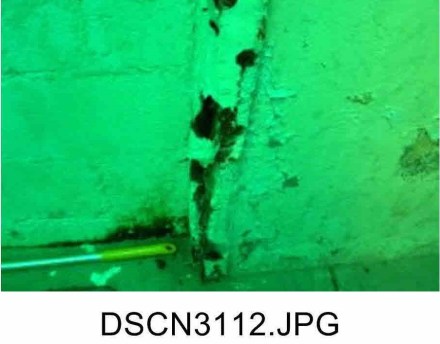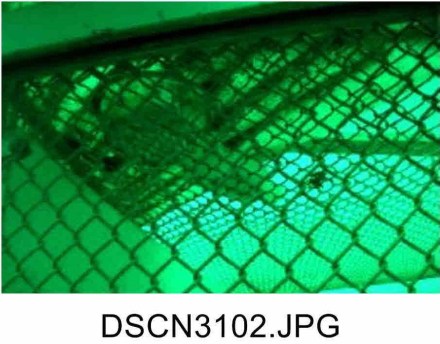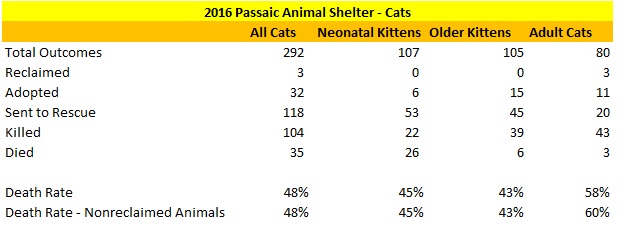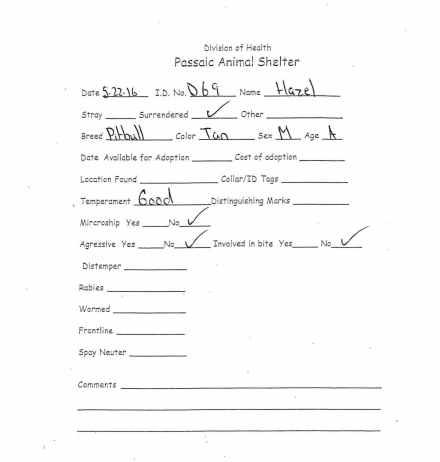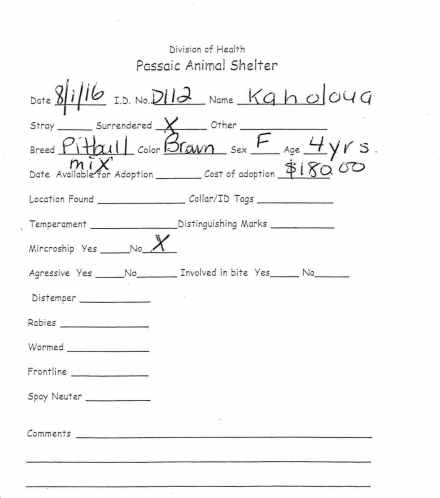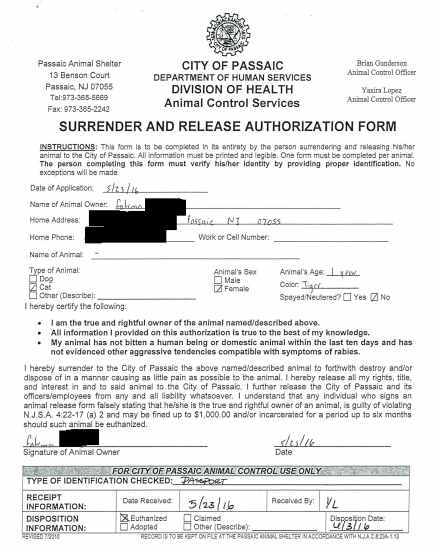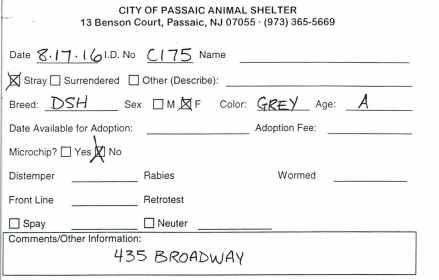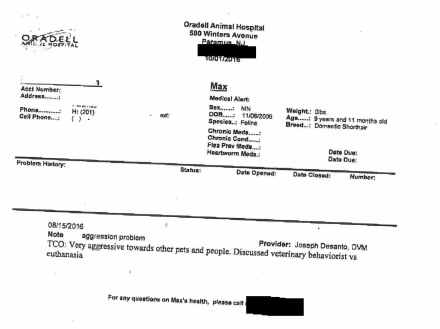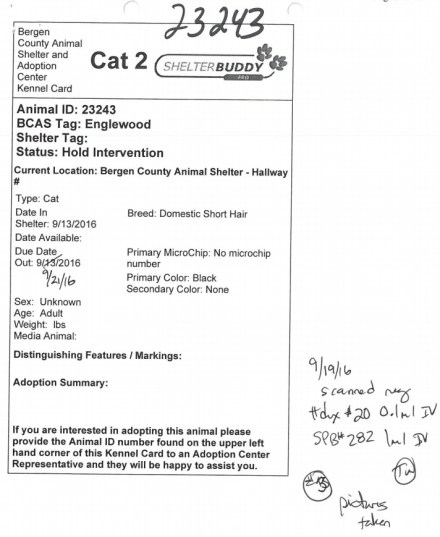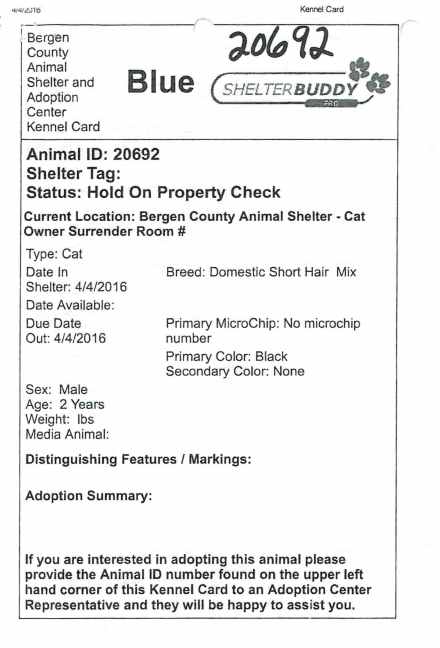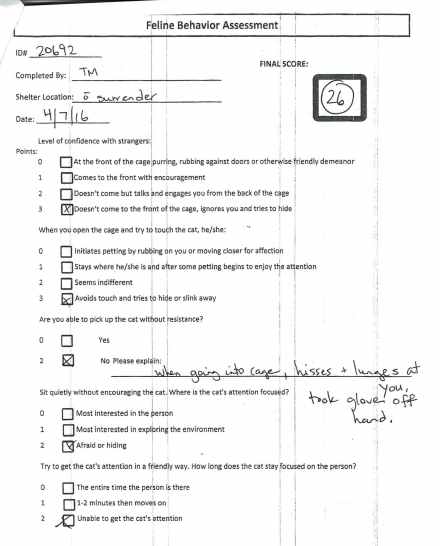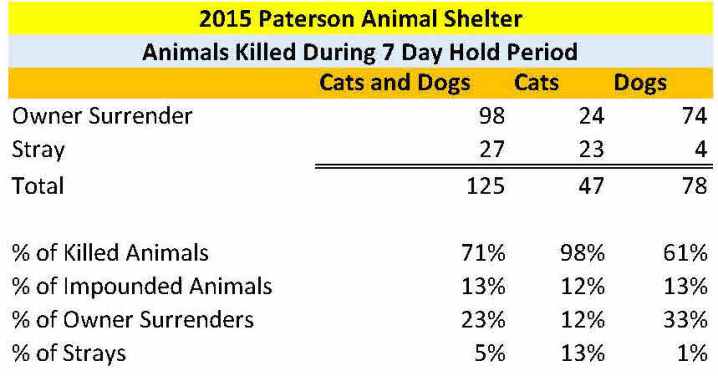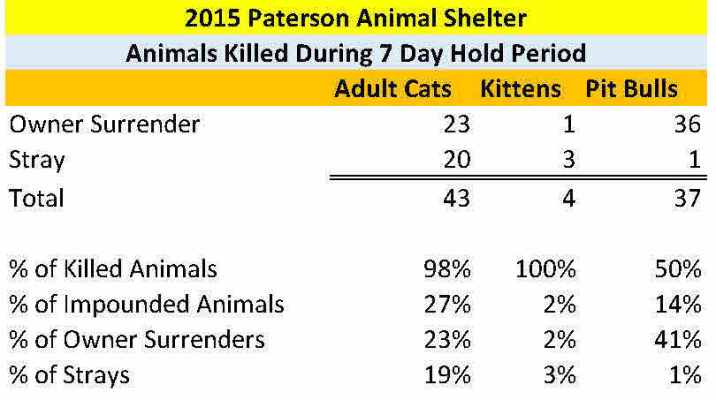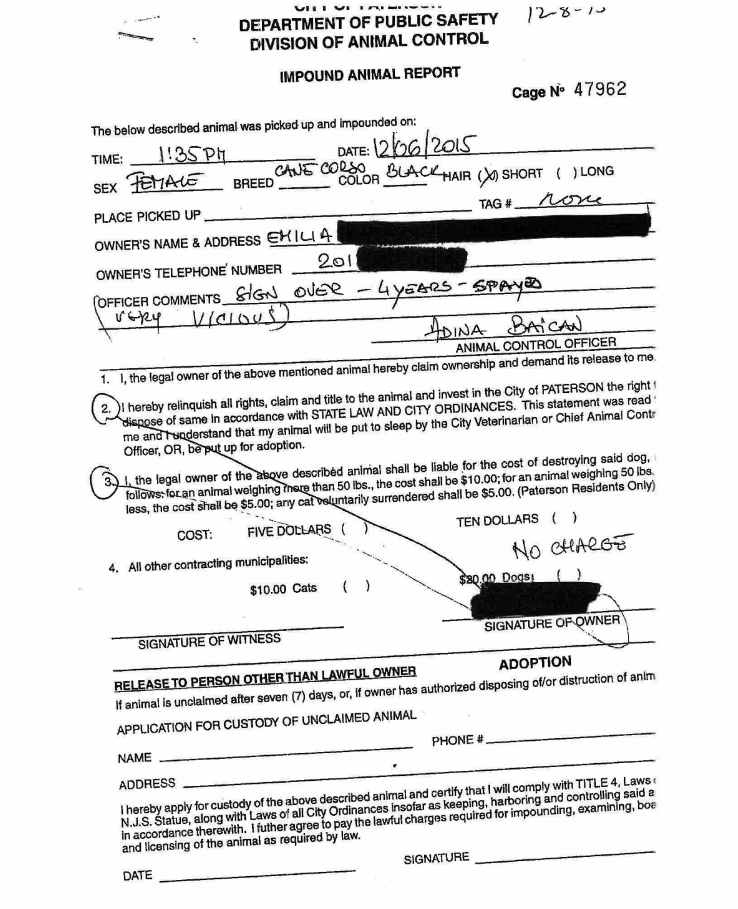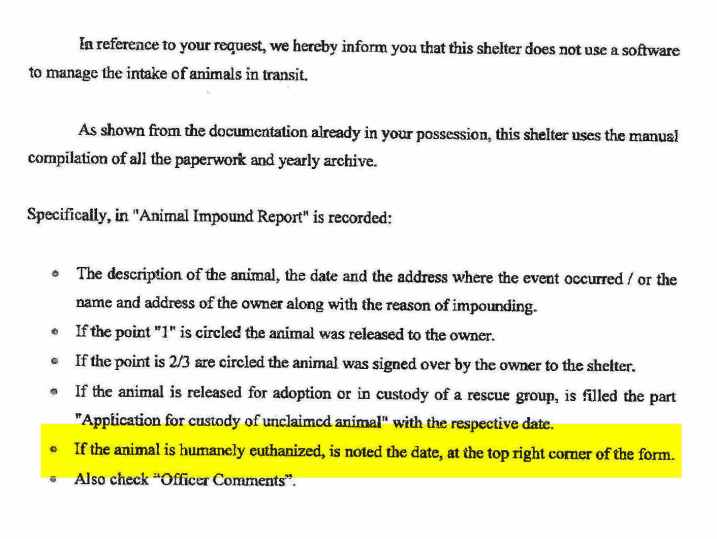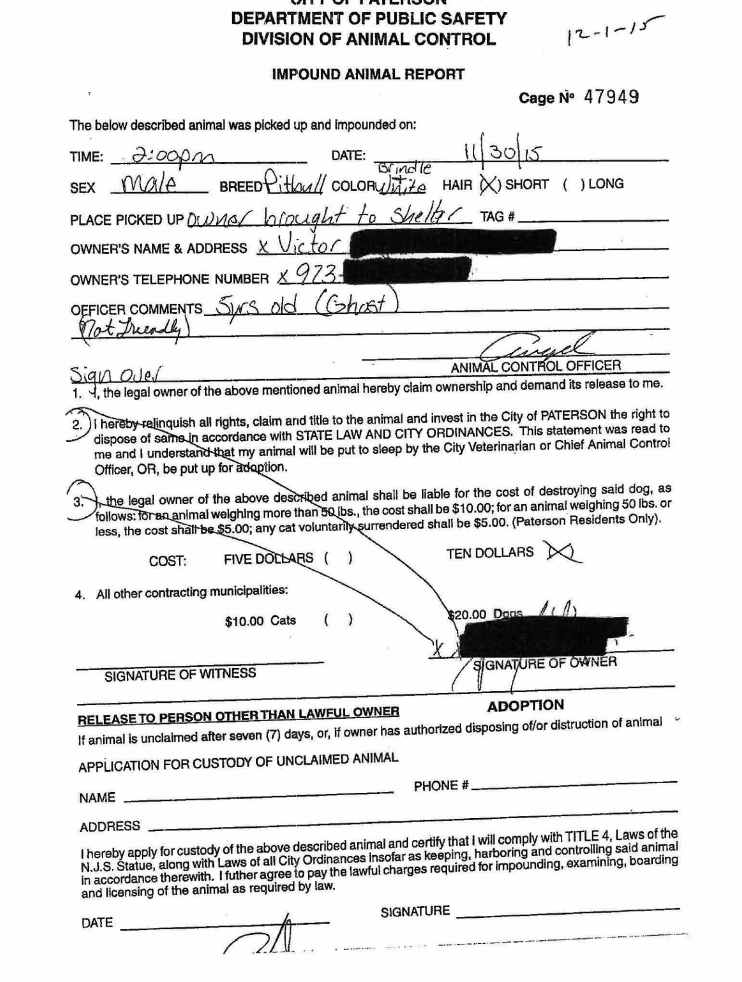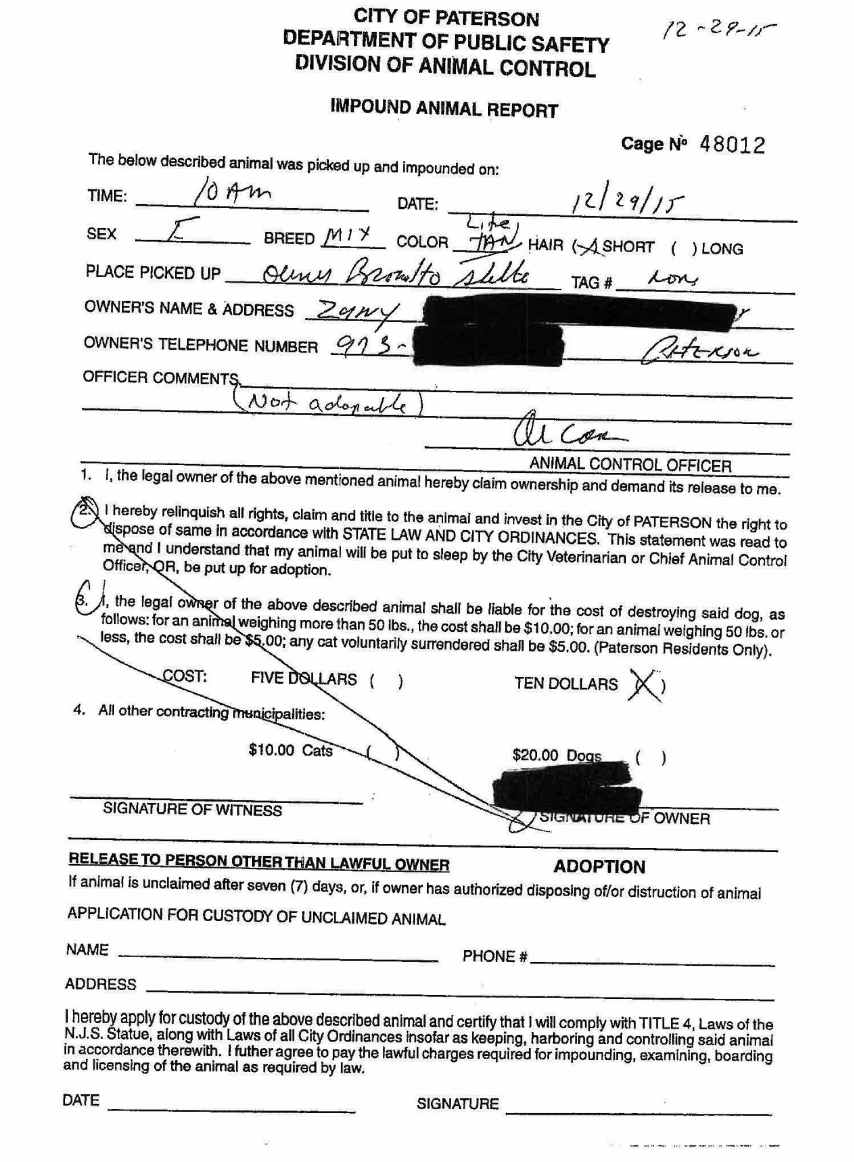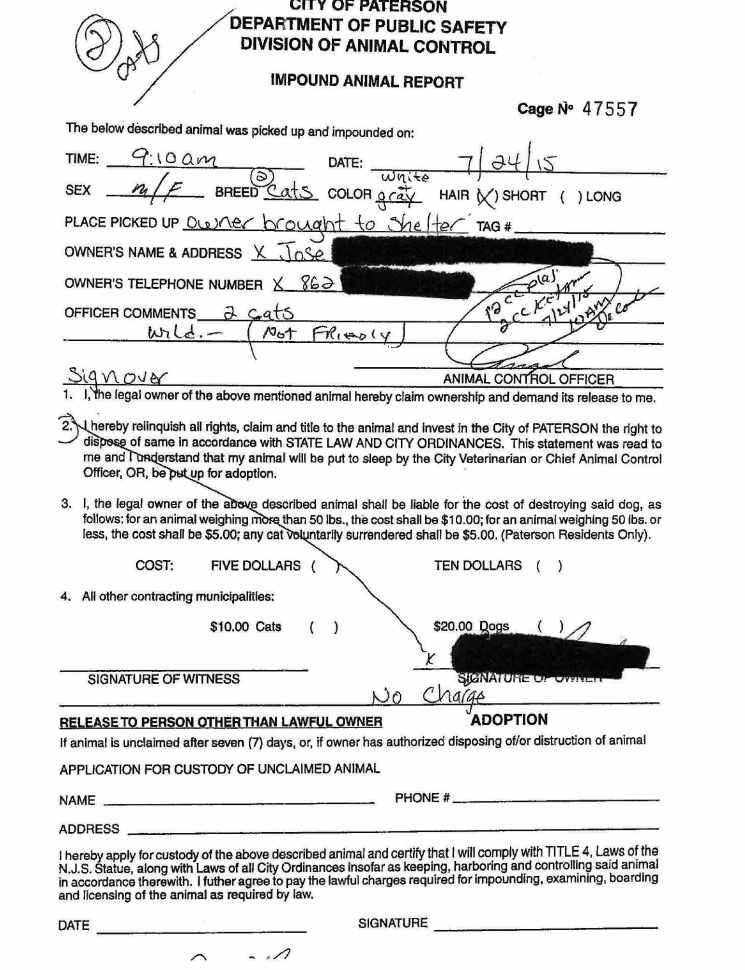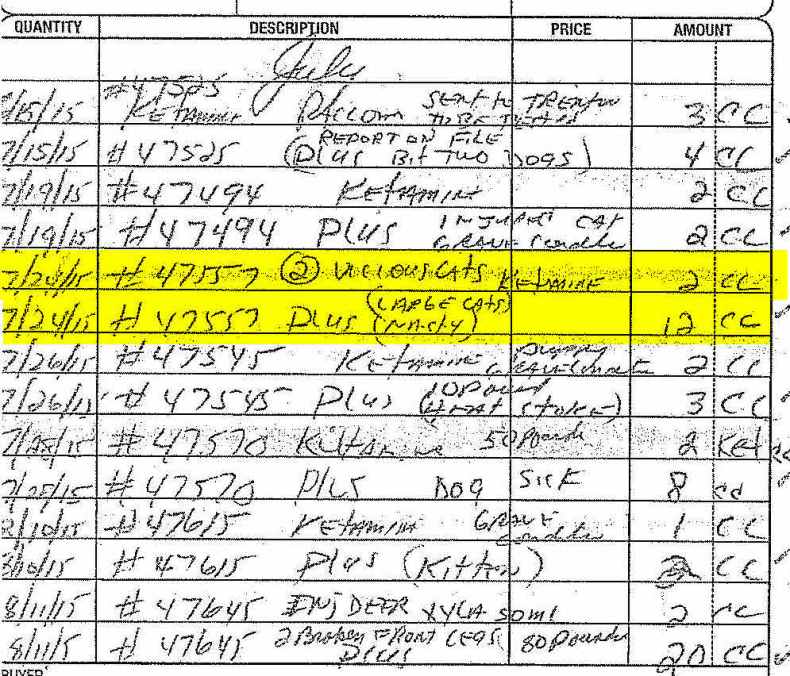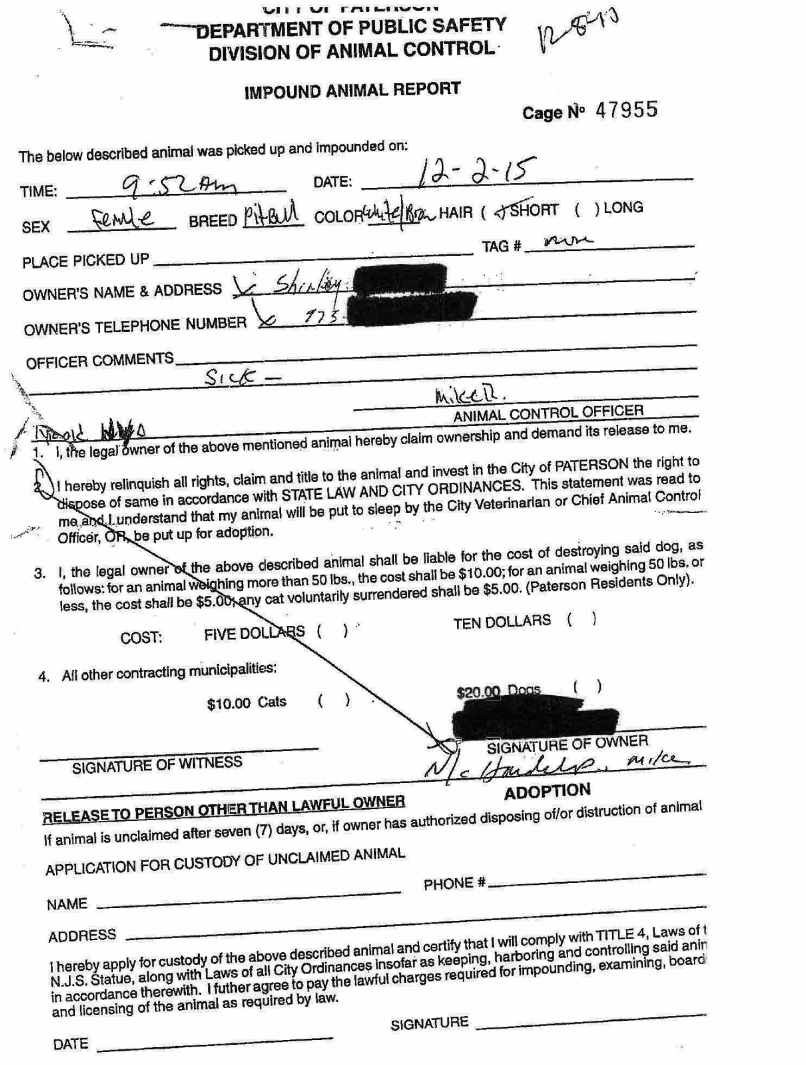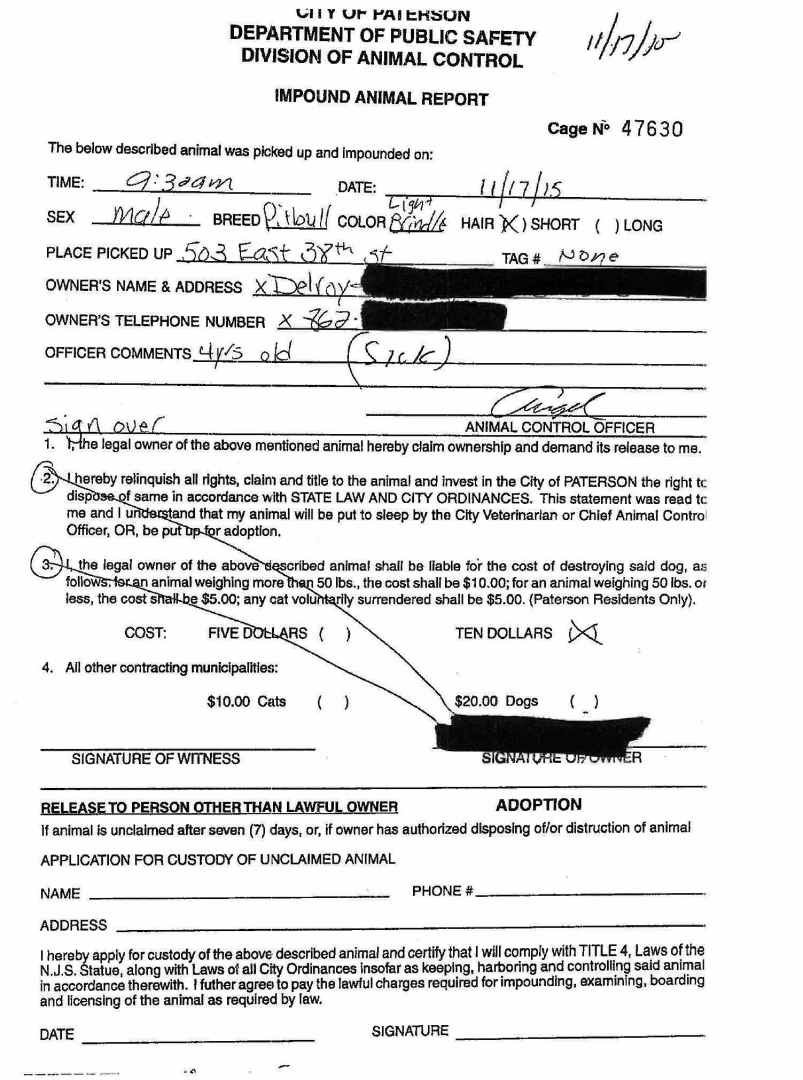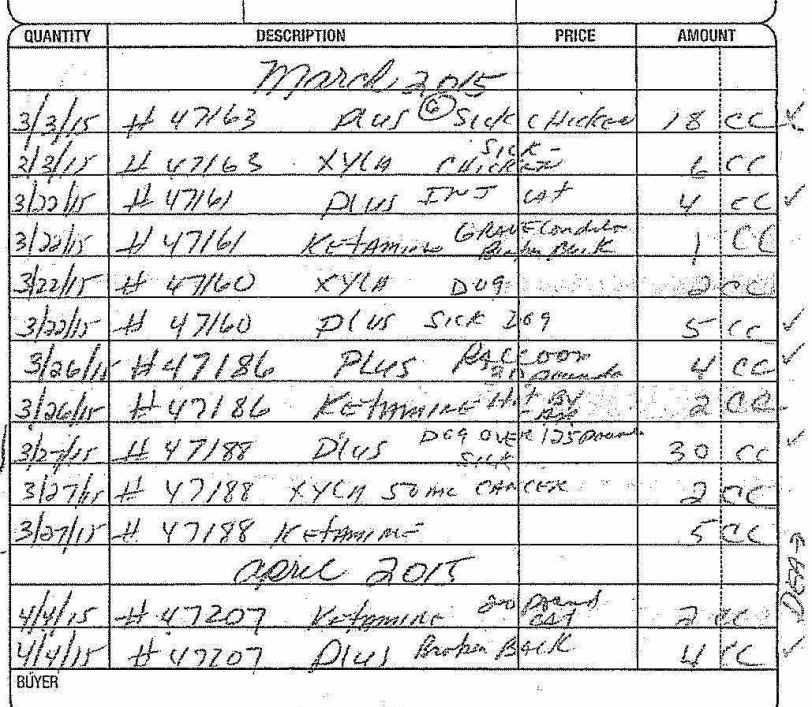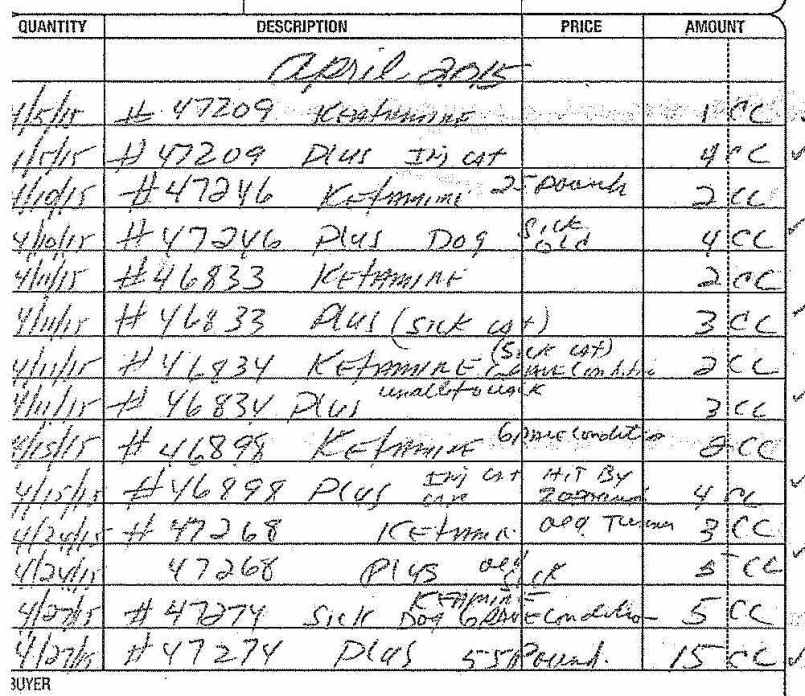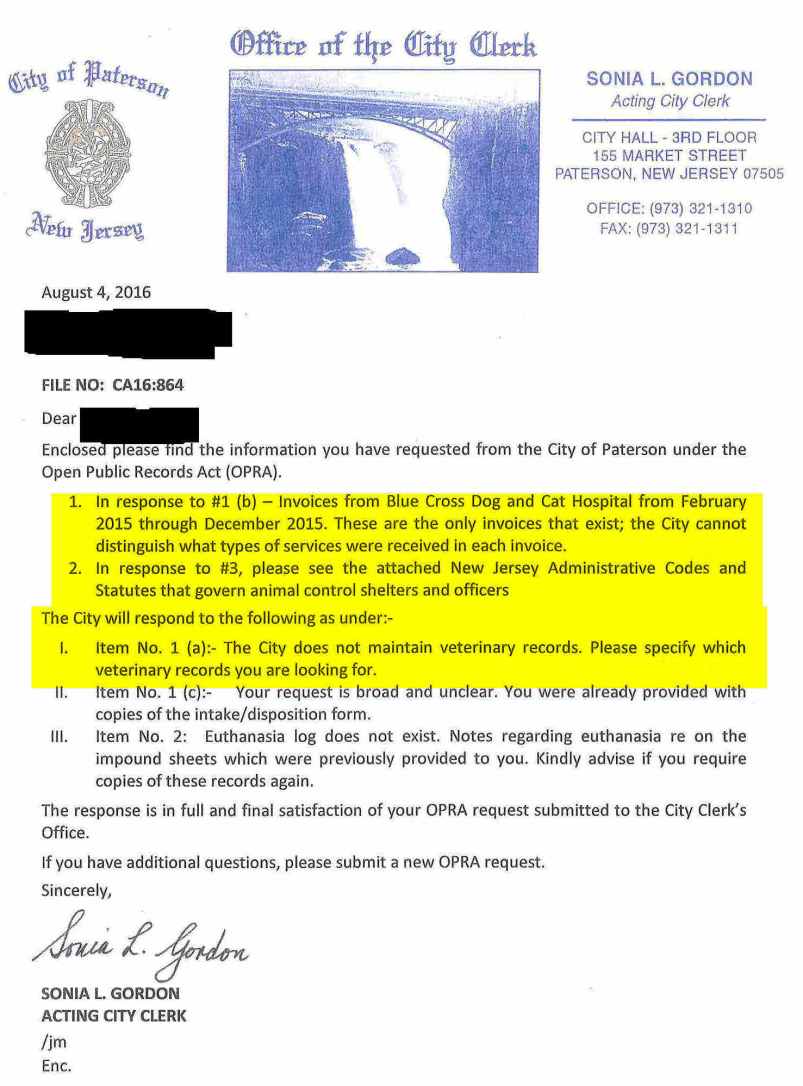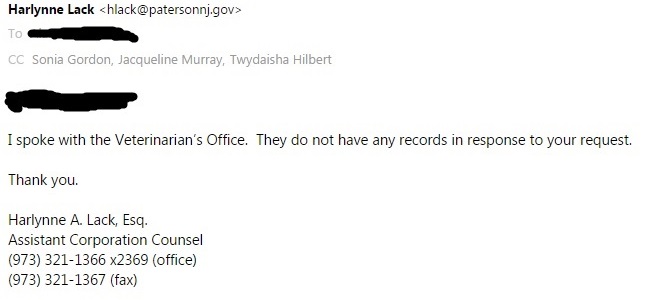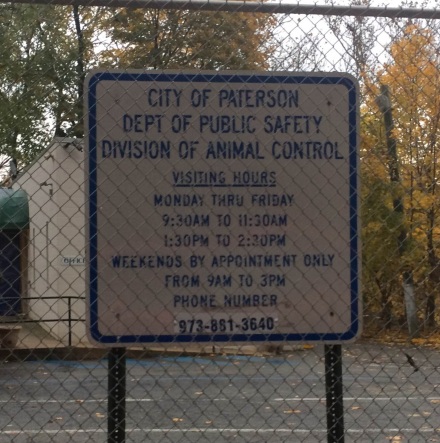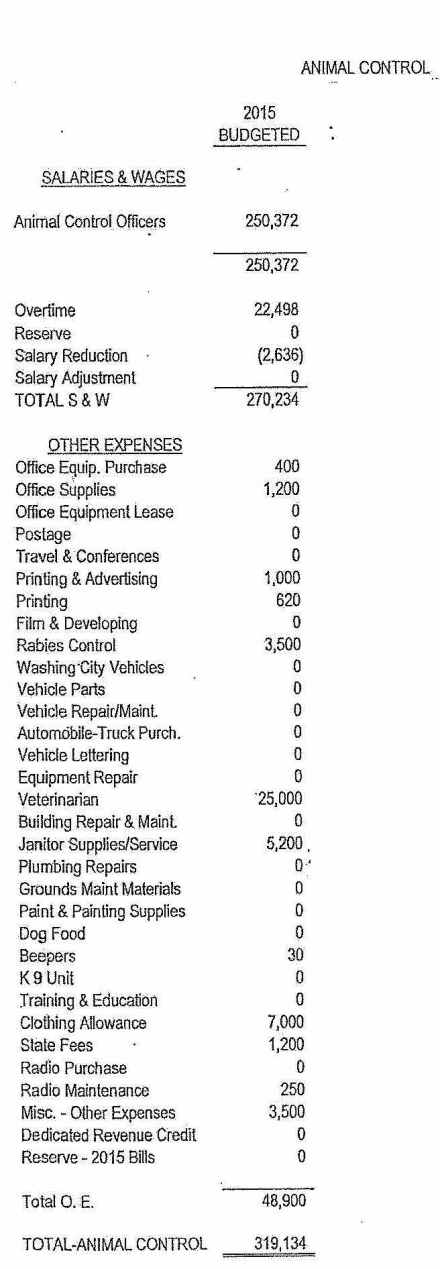In 2015, Gloucester County Animal Shelter made headlines for all the wrong reasons. First, the shelter illegally killed an owner’s cat after being at the shelter for just one day. Subsequent to this incident, the New Jersey Department of Health inspected Gloucester County Animal Shelter and reported the following:
- Shelter illegally killed 384 animals during the seven day protection period
- Facility allowed disease to spread like wildfire due to the lack of proper policies
- Shelter did not have a legally required disease control program under the supervision of a licensed veterinarian
- Facility illegally used intraperitoneal injections of Fatal Plus as its primary method to kill cats despite this procedure potentially taking up to 30 minutes
- Shelter did not weigh animals it killed
- Facility did not confirm animals were dead after killing
As a result of these events, the owner of the illegally killed cat and Stu Goldman, who is the former President and Chief Humane Law Enforcement Officer for the Monmouth County SPCA and former Chief Training Officer for the NJ SPCA, filed a lawsuit against the shelter for animal cruelty.
Did Gloucester County Animal Shelter fix all of its problems? Is the Gloucester County Animal Shelter still high kill?
Statistics Reveal a High Kill Shelter
Gloucester County Animal Shelter operated a cat slaughterhouse last year. You can view the actual records here. Overall, 68% of the cats the shelter took in during 2016 were killed, died or went missing. Typically, reclaimed animals have licenses and/or microchips and a shelter has to do little work to save these pets. If we just count cats the shelter had to find new homes for, 72% of cats were killed, died or went missing. Thus, nearly 3 out of 4 cats requiring a new home never made it out of this so-called shelter alive.
To make matters worse, Gloucester County Animal Shelter killed huge numbers of cats. During the year, the shelter killed 1,635 cats. Another 191 cats died and 9 additional cats went missing. Thus, around 5 cats on average lost their lives each day of the year at this pet killing factory.
Gloucester County Animal Shelter also killed huge numbers of dogs last year. You can view the actual records here. Overall, 17% of dogs lost their lives. If we just count dogs the shelter had to find new homes for, 36% of dogs were killed or died. In other words, Gloucester County Animal Shelter killed more than 1 out of 3 dogs requiring new homes. Thus, Gloucester County Animal Shelter was far from a safe place for dogs.

The shelter killed massive numbers of pit bull like dogs. Overall, 28% of pit bulls lost their lives. If we just look at pit bulls Gloucester County Animal Shelter had to find new homes for, 50% of these dogs lost their lives. To put it another way, pit bulls requiring a new home only had a 50-50 chance of making it out of the shelter alive. Thus, Gloucester County Animal Shelter was a death trap for pit bull like dogs.
Gloucester County Animal Shelter also killed too many small dogs. While the small dog death rate of 6% and nonreclaimed death rate of 14% were significantly lower than the corresponding figures for other types of dogs, they were still too high. For example, small dogs never pose a significant risk to adult people and no shelter should kill these animals for aggression. For example, Austin Animal Center only euthanized 2% of its adult Chihuahuas last year. Similarly, the Elizabeth Animal Shelter only euthanized 3% of all of its small dogs and only 6% of its nonreclaimed small dogs. As a result, Gloucester County Animal Shelter killed its small dogs at around two to three times the rate of other shelters doing a good job with these types of animals.
The shelter also killed many other medium to large size breeds of dogs. Gloucester County Animal Shelter killed 18% of all and 43% of nonreclaimed other medium to large size breeds of dog. In other words, the shelter killed nearly 1 out of 2 other medium to large size breeds of dogs requiring new homes. Thus, Gloucester County Animal Shelter was not a safe place for any medium to large size dog.

Gloucester County Animal Shelter’s length of stay data reveals it quickly killed dogs and cats. On average, Gloucester County Animal Shelter killed cats, all dogs, pit bull like dogs and small dogs after 18 days and other dog breeds after 19 days.
Also, the shelter took 77 days on average to adopt each cat out. Given Gloucester County Animal Shelter killed so many cats (i.e. the remaining cats likely were highly adoptable animals), the shelter should have adopted out these cats much more quickly.


To make matters worse, Gloucester County Animal Shelter killed dogs with empty kennels. Based on an equation for determining a shelter’s population, we can estimate the Gloucester County Animal Shelter’s average dog population during the year. Using the 989 annual dog intake figure and the 12 day average length of stay for all dogs, we can estimate Gloucester County Animal Shelter had on average 33 dogs in its shelter during 2016. The New Jersey Department of Health’s October 21, 2015 inspection report on Gloucester County Animal Shelter (29 dogs at facility) indicates this estimate was reasonable. 33 dogs only represents roughly 60% of the shelter’s 54 dog capacity per its 2016 Shelter/Pound Annual Report. Thus, Gloucester County Animal Shelter killed dogs while other kennels remained empty during the year.
Gloucester County Animal Shelter’s Absurd Reason for Killing Cats
Gloucester County Animal Shelter killed huge numbers of cats for alleged behavior problems. The shelter killed 985 cats or 37% of the cats it took in for being feral (27%) and for alleged behavior problems (10%). Frankly, any shelter classifying 27% of their cats as feral does not have a clue about cat behavior. In fact, a recent study documented 18% of impounded cats were initially classified as feral/aggressive, but all these cats became safe enough to adopt out after people gently touched the cats (using a stick for very aggressive cats) and spoke to them softly for 6 days. As a comparison, Austin Animal Center in Texas only killed 1 cat or 0% of all cats for temperament related reasons in 2016. Thus, Gloucester County Animal Shelter simply wrote huge numbers of cats off as feral or having behavioral problems and killed these animals.
Gloucester County Animal Shelter killed an unusually large percentage of animals for medical reasons. Overall, Gloucester County Animal Shelter killed 536 cats or 20% of their cats for medical reasons and another 63 cats or 2% due to a veterinary order (presumably the animals were hopelessly suffering). As a comparison, Austin Animal Center only killed 3% of their cats for all medical reasons. In other words, Gloucester County Animal Shelter killed cats for medical reasons at over seven times the rate as Austin Animal Center.


To make matters worse, Gloucester County Animal Shelter quickly killed cats for alleged behavior problems and health issues. The shelter killed cats for supposedly being feral as well as cats with other behavior issues after 16 days and cats with health problems after 22 days. Simply put, Gloucester County Animal Shelter hardly even gave these cats a chance.

Gloucester County Animal Shelter killed cats it classified as “feral” and did little else. Cat ID# 239994, who was just 2 years old, was trapped and picked up by a Gloucester County Animal Shelter ACO on May 26, 2016. Other than making some basic notes about the sex of the animal, noting the cat was possibly pregnant, and stating the cat had no microchip, the shelter did nothing, but kill this cat eight days later. In fact, the records below indicate the cat received no veterinary care and there is no documentation of the shelter providing socialization.


Cat ID# 238919 was a 4 month old cat who was trapped and taken by an ACO to the Gloucester County Animal Shelter on February 8, 2016. Other than scanning the animal for a microchip, Gloucester County Animal Shelter did nothing for this kitten. After 8 days, the shelter killed this kitten for being “feral.”


Cat ID# 243787, who was just 2 years old, was trapped and brought by an ACO to the Gloucester County Animal Shelter on December 13, 2016. Gloucester County Animal Shelter vaccinated the animal on her second day at the shelter and scanned her for a microchip. After 8 days of apparently doing nothing else, Gloucester County Animal Shelter killed this young cat for being “feral.”


Gloucester County Animal Shelter also killed cats for absurd behavioral reasons. Molly was a spayed 3 year old cat who was surrendered to the Gloucester County Animal Shelter on May 16, 2016. According to the owner, Molly was an indoor cat, did not cause damage in the home, used a litter box, liked school age kids and adults, was playful, friendly, affectionate, shy and nice. Unfortunately, Molly fought with another cat in the household, but the owner acknowledged Molly was not used to other animals. Instead of adopting out this wonderful cat to a home without cats or to a family that would socialize her with their own cats, Gloucester County Animal Shelter killed Molly 18 days later.




Gloucester County Animal Shelter also killed cats for ridiculous “health” reasons. Slinkie was a one year old cat surrendered by her owner on December 12, 2016 due to the owner losing their home. According to her owner, Slinkie was sociable, used a litter box, did not cause damage, liked adults, school age children and other cats and was playful, friendly and affectionate. In addition, the owner spayed Slinkie at the People for Animals clinic earlier in the year. Despite this cat being a wonderful pet, Gloucester County killed Slinkie 8 days later for having easily treatable ringworm.

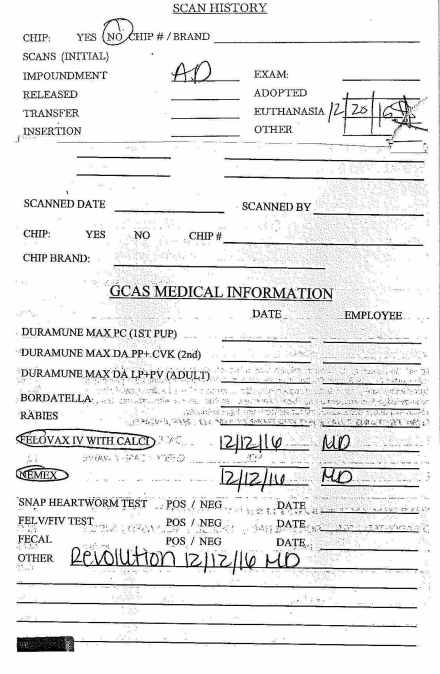

Gloucester County Animal Shelter’s Poor Reasons for Killing Dogs
Gloucester County Animal Shelter used the reasons below to kill dogs. Most striking, was that the shelter killed 13% of all impounded dogs for behavior/aggression related reasons. As a comparison, Gloucester County Animal Shelter killed a significantly larger percentage of dogs for aggression/behavior issues than Austin Animal Center (0.5% of all dogs killed for aggression related reasons in the last quarter of of fiscal year 2016). The shelter also killed 4% of all dogs for medical reasons compared to just 1% of dogs at Austin Animal Center in 2016. Thus, the data strongly suggests Gloucester County Animal Shelter killed too many dogs for aggression and medical related reasons.

Gloucester County Animal Shelter killed far too many pit bulls for aggression related issues. Astonishingly, the shelter killed 20% of all impounded pit bulls for “behavior” and “bite cases.” As a comparison, Austin Animal Center only killed 2% of all its pit bulls in 2016 for behavioral and similar reasons. However, Austin Animal Center likely killed a lower percentage of pit bulls in the final quarter of 2016 since the percentage of all dogs killed for behavior dropped in half. Therefore, Austin Animal Center may have killed only 1% of pit bull dogs for behavior related reasons during this time. In other words, Gloucester County Animal Shelter killed pit bulls for aggression related reasons at 10-20 times the rate as Austin Animal Center.
Similarly, Gloucester County Animal Shelter also appeared to kill too many pit bull like dogs for medical related reasons. While Gloucester County Animal Shelter killed 6% of all pit bulls for medical related reasons, Austin Animal Center only euthanized 1% of its pit bulls for these reasons.

Gloucester County Animal Shelter also appeared to kill too many small dogs for aggression related problems. Specifically, Gloucester County Animal Shelter killed 3% of small dogs for these reasons while Austin Animal Center killed 0% of small dogs for these reasons. Frankly, shelters should never kill small dogs for aggression related problems given their inability to inflict serious harm on an adult person (i.e. such dogs can be placed in adult only homes).

Gloucester County Animal Shelter also killed an abnormally large percentage of other medium to large size dogs for aggression and medical related problems. The shelter killed 14% of other medium to large size breeds of dogs for “behavior” and “bite case” reasons. As a comparison, Austin Animal Center only killed 2% of its other medium to large size breeds for these reasons. Similarly, Gloucester County Animal Shelter killed 4% of other medium to large size dogs for medical reasons while Austin Animal Center only euthanized 1% of these types of dogs.

Gloucester County Animal Shelter quickly killed dogs for behavior reasons. The shelter killed dogs for “behavior” after just 18 days on average. In other words, these dogs did not even get three weeks to decompress at the shelter.

While this data was not materially different for pit bulls and other medium to large size breeds, Gloucester County Animal Shelter killed small dogs even faster for behavior related reasons. Specifically, the shelter killed small dogs for “behavior” after just 11 days on average.

Dog ID# 238996 was a 3 year old pit bull like dog who was picked up as a stray on March 20, 2016. On the dog’s “Impoundment Exam”, the dog was noted as being “extremely stressed” in her kennel, “skinny” and had “possible ear infections.” None of the records I reviewed indicated any effort to reduce stress as required by state law and the New Jersey Department of Health’s related guidance. Instead, Gloucester County Animal Shelter killed her 11 days later for “behavior.”


Dog ID# 241788 was a 2 year old Labrador retriever that was turned in by a person who found him on July 9, 2016. The dog’s Impoundment Exam stated he had a healing puncture in his ear and an abrasion over his eye. Remarkably, the shelter stated “he was trying to eat neighboring dog through cage” (i.e. barrier reactivity). As Dogs Playing for Life states, barrier reactivity is “not an accurate indicator of a dog’s social skills.” Volunteers at most animal shelters will tell you how different dog behavior is inside a cage at a stressful shelter and outside in real world situations. Adding to the normal stress this dog would feel after being thrown into a chaotic shelter environment, Dog ID# 241788 would have also had to deal injuries to his ear and the area above his eye. Despite barrier reactivity or kennel stress being easy to fix, Gloucester County Animal Shelter killed this dog a mere 13 days after he arrived at the shelter for “behavior.”


Bentley (ID# 243866) was 2 year old Lhasa Aspo-poodle mix who was brought in for a rabies quarantine after the dog bit his owner on their thumb. However, the bite was so minor that the person was able to treat it without the help of a physician. Despite many people wanting to adopt small dogs like this, even those that bite/nip, Gloucester County Animal Shelter refused to evaluate the dog’s behavior due to the “bite case.” After just 20 days, Gloucester County Animal Shelter killed this dog for being a “bite case.”



Gizmo (ID# 241545) was an 8 year old pit bull like dog surrendered by his owner to the Gloucester County Animal Shelter on August 29, 2016. Apparently, the owner’s spouse left them and they had to move to a place that would not accept Gizmo. The dog’s Impoundment Exam stated he had “missing patches of fur in patches”, “dandruff” and a “possible skin infection.” According to the owner, Gizmo, who was neutered, was an inside dog, and liked all kinds of people, including seniors, kids and babies. The owner noted Gizmo was friendly, playful and tolerant. Additionally, he tolerated bathing, nail clippings and ear cleaning. While the owner did say Gizmo was destructive, the dog was left alone in a basement for 8-10 hours a day where such behaviors could understandably develop. Despite Gizmo being great with people and not having any serious medical issues, Gloucester County Animal Shelter killed him after just 8 days for “health” reasons.



Gloucester County Animal Shelter Uses Improper Method to Kill Thousands of Cats
Under N.J.A.C. 8.23A-1.11, animal shelters can only use intraperitoneal and intracardiac (i.e. heart stick) injections to kill/euthanize animals in specific situations. Specifically, when an animal is very small or a comatose animal with a depressed vascular function. For heart sticking, an animal must also be heavily sedated or in a comatose state.
The primary recommended method is an intravenous injection of a barbiturate; however, an intraperitoneal or intracardiac injection may be made where intravenous injection is impractical, as in the very small animal, or in the comatose animal with depressed vascular function. Intracardiac injection is acceptable only when performed on heavily sedated, anesthetized or comatose animals.
Intraperitoneal and intracardiac methods of euthanasia are restricted for good reason. Under the intraperitoneal method, animals are injected in the abdominal cavity and can take up to 30 minutes to die. Heart sticking, as the name implies, involves stabbing an animal in the heart with Fatal Plus poison and is obviously barbaric. Thus, animal shelters should limit these methods or not use them altogether for both legal and humane reasons.
The New Jersey Department of Health’s October 21, 2015 inspection report clearly stated Gloucester County Animal Shelter was violating state law by using intraperitoneal injections as the “primary method” of euthanizing “all cats and kittens.”
1.11 (c) The acceptable methods of euthanasia include the following: 1. The primary recommended method is an intravenous injection of a barbiturate; however, an intraperitoneal or intracardiac injection may be made where intravenous injection is impractical, as in the very small animal, or in the comatose animal with depressed vascular function.
Cats and kittens were not euthanized by intravenous injection as required. Documents indicated and the inspector was told at the time of this inspection that the primary method of euthanasia for cats at the facility was an intraperitoneal injection of sodium pentobarbital. All cats and kittens were euthanized by this method, including healthy adult cats and larger kittens over 4 weeks of age rather than cats that were comatose and had depressed vascular function or very small neonate kittens where intravenous injection may be impractical. Intraperitoneal and intracardiac injections are not to be used as the primary method of euthanasia for animals at the facility and these methods of euthanasia are only acceptable with documented justification.
Gloucester County Animal Shelter killed almost every cat using intraperitoneal injections in 2016 and the first 11 or so months of 2017. You can view the 2016 and 2017 euthanasia logs showing this here and here. The shelter used intraperitoneal injections to kill not just small kittens, who might be difficult to euthanize using intravenous injections, but older kittens and adults cats as well. In 2016, the shelter failed to even justify using intraperitoneal injection for almost every cat. While Gloucester County Animal Shelter did explain why it used intraperitoneal injections in 2017, it often used inadequate reasons such as “Staffing” and “Other Medical.” In addition, I noticed a number of cats were euthanized using both intraperitoneal and heart stick injections without any confirmation the animal was in comatose state. Thus, Gloucester County Animal Shelter continued to violate state law on a grand scale even after being called out on it in a 2015 inspection report.
Frankly, the New Jersey Department of Health should pursue the maximum penalty for each animal Gloucester County Animal Shelter improperly killed. While the fines under existing law of $5-$50 per offense are way too small, these fines could add up to a significant amount. For example, if Gloucester County Animal Shelter improperly euthanized 3,000 animals in 2016 and 2017 and the New Jersey Department of Health or the Gloucester County Health Department pursued the maximum fine of $50, Gloucester County Animal Shelter could face a $150,000 penalty.
Additionally, the New Jersey Department of Health should reinspect the shelter every month and assess new fines for each shelter law violation not corrected. Gloucester County officials must face a steep monetary penalty for allowing these blatant law-breaking activities to go on.
Gloucester County Must Clean House at its Animal Shelter
Gloucester County Animal Shelter must fire Shelter Director, Bill Lombardi. Personally, I thought the county should have terminated Mr. Lombardi and brought animal cruelty charges against him after the horrific 2015 New Jersey Department of Health inspection. For Gloucester County to pay this man around $90,000 to run a high kill shelter and to regularly kill cats using a method the 2015 New Jersey Department of Health inspection report indicated was inappropriate is unforgivable. Simply put, Gloucester County must part ways with Bill Lombardi.
Gloucester County Animal Shelter is failing its residents. Last year, Gloucester County Animal Shelter only took in 13 dogs and cats per 1,000 people and 36% of nonreclaimed dogs and 72% of nonreclaimed cats lost their lives. As a comparsion, the corresponding figures at Kansas City’s animal control shelter were 8% for dogs and around 10% for cats despite that facility taking in 20 dogs and cats per 1,000 people and approximately three times as many dogs and cats in total.
Gloucester County Animal Shelter should bring in a no kill consultant to revamp the shelter’s policies and evaluate all its personnel. Clearly, Gloucester County Animal Shelter is doing almost everything wrong and requires wholesale change. If Gloucester County can bring in a top notch no kill consultant, such as No Kill Learning, the county can turn its shelter around and ultimately save money by doing things right the first time. Furthermore, creating a no kill community can benefit all county residents as a 2017 University of Denver study showed the Austin, Texas no kill initiative resulted in a $157 million net economic benefit to the region.
Gloucester County should pressure its municipalities to enact TNR. While the county passed a resolution last summer supporting municipalities that allow TNR, the county shelter should refuse to impound feral cats from those communities that continue to ban TNR. If Gloucester County Animal Shelter were to do this, you would quickly see the municipalities passing TNR ordinances. As a result, taxpayers would save money and the shelter would stop killing many cats.
Gloucester County residents must call and write key elected officials and demand they turn the county shelter into a no kill facility. Currently, Gloucester County taxpayers give the shelter $1.9 million a year or $505 per dog and cat. This level of funding is equal to or greater than many no kill animal control shelters. Gloucester County residents should contact Freeholder Director, Robert Damminger, at (856) 853-3395 and rdamminger@co.gloucester.nj.us as well as Freeholder, Daniel Christy, at (856) 853-3383 and dchristy@co.gloucester.nj.us, and demand the following:
- Fire Shelter Director Bill Lombardi
- Hire a No Kill Consultant to help turn the shelter into a no kill facility
- Refuse to impound feral cats from municipalities that ban TNR
- Enact the Companion Animal Protection Act to ensure the shelter makes a minimal effort to save lives and treat animals humanely
Gloucester County’s elected officials have the opportunity to give this horror story a happy conclusion. Let’s make sure they do so.






